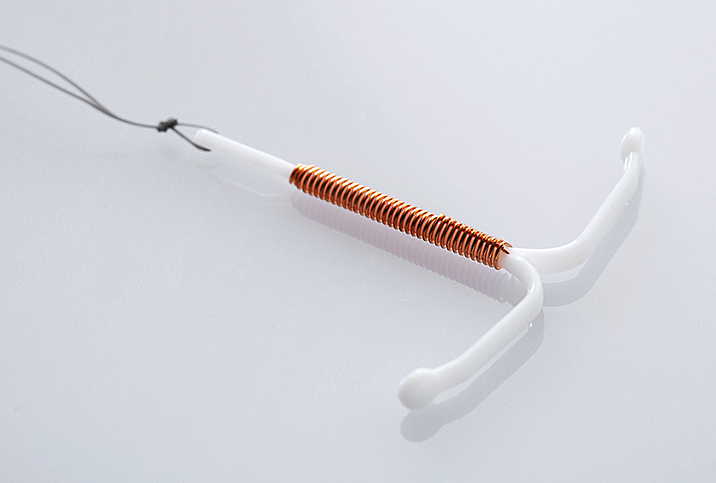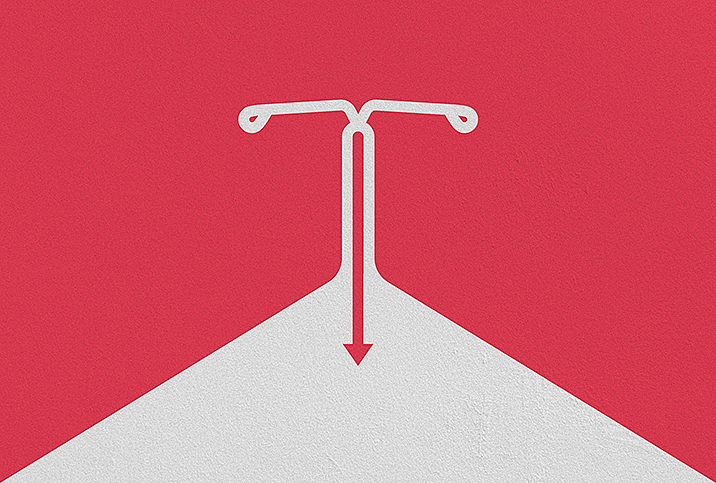Can a Copper IUD Cause Bloating or Joint Pain?

Soon after Kyra left the doctor’s office, she felt a stabbing pain on the left side of her abdomen. She just had a copper intrauterine device (IUD) inserted, and the procedure went smoothly; she knew cramping was a common side effect and could last a few days.
However, Krya’s symptoms progressed. Her face and the areas under her eyes swelled, her stomach bloated and she was routinely constipated.
Over the next month, her skin tone shifted to yellow and she developed a high temperature.
What should you know about a copper IUD?
Kyra (whose name has been changed) had a feeling her IUD was to blame. But Kyra’s doctor didn’t agree, instead prescribing laxatives for what she suggested could be irritable bowel syndrome (IBS) and then questioning her mental state, hinting that the anxiety was likely linked to her gut health.
“Even when I repeatedly pointed out that the symptoms started right after insertion, and there were no other changes in my life, she brushed it all off,” said Kyra, 33. So, why didn’t her doctor believe her?
Although IUDs have been around since the 1990s, they’ve skyrocketed in popularity since 2013, and for good reason. The T-shaped device is more effective than the pill, can be left inserted for five to 12 years and requires minimal maintenance.
Patients have two IUD options in the U.S.:
- Nonhormonal (ParaGard)
- Hormonal (Mirena, Kyleena, Skyla and Liletta)
Some folks opt for the nonhormonal copper IUD coil over estrogen- and progestin-based devices, because hormones can alter a patient’s menstrual cycle and interact with other medications.
How do you know if your copper IUD is the cause of your pain?
In the U.S., the copper IUD has been implanted in roughly 800,000 women.
While not everyone will experience adverse symptoms related to their copper IUD, symptoms are not uncommon—and many suspect copper toxicity.
In November 2020, Kyra joined the Facebook group Copper IUD and Toxicity Support, which has more than 6,500 members.
Many in the group describe symptoms that include:
- Acne
- Painful sex
- Dehydration
- Weight gain
- Depression
- Joint pain
- Suicidal thoughts
The body needs copper for bone strength, maintaining a healthy metabolism and for making sure the nervous system works correctly, but too much is unhealthy.
Copper toxicity symptoms include:
- Headaches
- Nausea
- Diarrhea
- Black waste
- Abdominal pain
- Swollen eyes
- Yellowing of the skin
- Behavioral symptoms, such as anxiety and depression
Sound familiar?
What can happen when you remove a copper IUD?
After seeing two specialists, having two internal and two external ultrasounds and three ER visits, Kyra finally had her IUD removed eight months after insertion.
“Within an hour after removal, and after a lot of peeing, my bloating visibly shrunk,” Kyra said. Within a week, all of Kyra’s symptoms associated with her IUD were gone.
In the copper IUD Facebook group, people detail their recovery and how fast their symptoms, such as joint pain and bloat, dissipated after having their IUD removed.
Others share photographs of their devices in their hands, relieved to have them expelled. Many of them celebrate the reclamation of their body now that they are beginning to feel like themselves again.
Does a copper IUD leave women in pain?
Some doctors dismiss copper toxicity related to IUDs due to the lack of scientific evidence and research.
Dr. Robert Kiltz, M.D., a board-certified physician and author of "The Fertile Feast," explained, "In about 15 percent of women using an IUD, it can become dislodged or embedded in the uterus, but these are less common side effects."
Kiltz said that patients should "absolutely" inform their doctors of any side effects that are outside of the normal scope. "It's essential that a [person] who has an IUD be cognizant of any significant pain, increased bleeding, or fevers that may be related to the IUD and subsequently cause infertility," he noted.
Public complaints prompted the U.S. Food and Drug Administration (FDA) to research copper IUDs, and, in September 2019, the administration released a paper explaining that copper implants may include outcomes such as heavy bleeding and device expulsion.
The makers of ParaGard, Teva Pharmaceuticals, were ordered to issue a warning label for the device, explaining that when an IUD’s plastic and copper break down in the body during removal or during expulsion.
This breaking down can lead to pain, infertility or a procedure called a hysteroscopy, which uses small instruments to enter the uterus and remove parts of the device.
Since 2019, the FDA has received more than 1,600 reports of copper IUD breakages in the uterus.
The bottom line
But for folks like Kyra, that’s not enough. "I cannot wait for the FDA to take us seriously," she said. Many members of the Facebook group have written and called the FDA to ask that they provide proper warnings for side effects that aren’t mentioned on the label.
For many, their issues extend beyond bleeding and expulsion. And online communities, like the copper toxicity group on Facebook, may be proof that a copper IUD can cause pain.
Some people spend up to seven years battling their adverse symptoms, begging their doctors to believe them. When is a patient’s testimony of pain considered valid enough to not ignore?


















